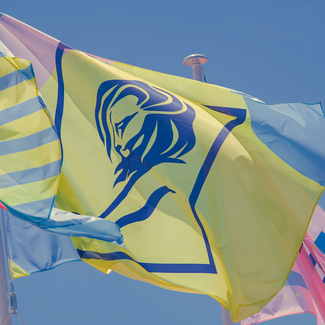
So What On Earth Should We Make of Cannes Lions 2023?
From improved diversity to a more measured approach to purpose, the Festival moved things up a notch; but the creative bar wasn't always high enough
26 June 2023
So was there a collective lunge at advertising’s ‘Reset’ button last week in Cannes? Well, to an extent.
First, the diversity agenda (quite correctly) dominated Cannes once again. And while it seemed to mirror previous years, with endless panels, roundtables and yet more handwringing, at least this year there was tangible evidence that meaningful change is starting to happen.
A quick glance at the faces of the senior leadership of the industry tells a familiar story, but this year the Inkwell Beach - which brings diverse talent to Cannes, championing a multicultural presence at the Festival, and is supported by companies like Procter & Gamble and the big advertising groups - was bang in the centre of the Croisette, right opposite the braying crowds of the Carlton Terrace. Symbolically, at least, this is significant – it’s a potent sign that inclusion is not just an item on an agency’s list of ‘things to talk about at Cannes’ or something happening on the margins - it’s front and centre. And that's a start.
There were some grumbles amongst seasoned creative judges, however, that the Lions juries themselves may have been diversified too quickly and that some of the judging decisions belie a lack of experience. If there's any truth in this, then the issue will of course settle over time; you get experience by being in the room and being included, and it's imperative we make the move towards more diverse voices. But there were certainly some odd choices made in the jury rooms and it serves no-one for pretty average work to be held up as examples of excellence for others to aim at.
Elsewhere, the chief brand officer of one of the biggest advertisers of the world, P&G’s Marc Pritchard, was also heard urging the industry to reset the creative bar across insight, inclusion and impact to drive market growth for their brands. “That’s the next reset – creativity that grows markets, it’s the creative ambition we’re setting for our brands [at P&G].” Which does beg the question why else would P&G buy creativity if not to grow its business.
Anyway, Pritchard demanded a recalibration of the bar for creative inclusion “to serve all people and each person” beyond “narrowly defined” target audiences to reach all potential consumers. “For the cleaning, health and hygiene products our brands offer, people may have different needs based on their age, gender, race, ethnicity, socioeconomic situation, gender identity, sexual orientation, ability and where they live. That requires more precision, serving in ways that are relevant and better for each person, to unlock further potential for market growth,” said Pritchard.
With one of the world’s biggest advertisers still wrestling with how to deploy creativity to drive growth, it was also encouraging to see so many other marketers throng the Palais, the beaches, the parties and the villas, all trying to understand what creative excellence looks like. If this prompts more investment in high calibre advertising and sensitive targeting of different audiences next year, then this can only be a good thing.
It’s disappointing, then, the Festival’s Creative Marketer of the Year was once again AB InBev, on the back of a pretty uninspiring body of work; if the Cannes organisers really do want to award creative excellence, they might want a reset of their own by digging deeper and looking harder and taking a stand if big brand owners simply aren’t producing work that the industry should be applauding. One of AB InBev’s biggest competitors was out in Cannes in force with a target of emulating or outdoing its rival next year – hardly an ambitious strategy.
Meanwhile, Amazon dominated the view from Creative Salon’s base with an ad that said everything about the scale of Cannes and nothing about what good creativity is.
This is the world’s biggest advertiser, advertising at the world’s biggest ad festival and this was the biggest ad there. It’s a depressing example of impoverished creativity and hyperbole over substance.
It’s interesting to note, too, that although entry numbers to the awards were up six percent year on year to just under 27,000 in 2023, this was way down on the record 43,000 entries received in 2016.
As for the winners, it seems that the purpose bubble has finally started to deflate, with jurors awarding work that extended beyond just ‘doing good’ to being good (not that the two are mutually exclusive). If only Cannes can next shake its strange obsession with ‘celebrities’ and create culture of its own, rather than borrowing it from a rather shallow pool of global ‘superstars’, then its reset might be further on the way to completion.
